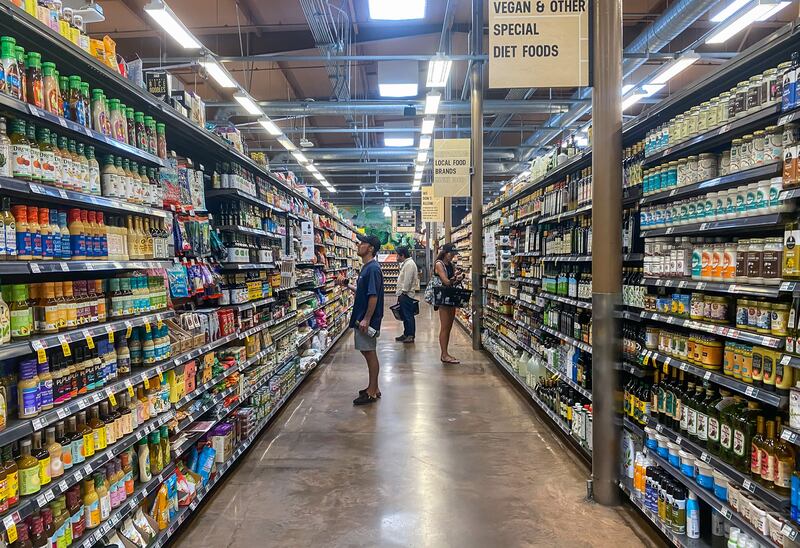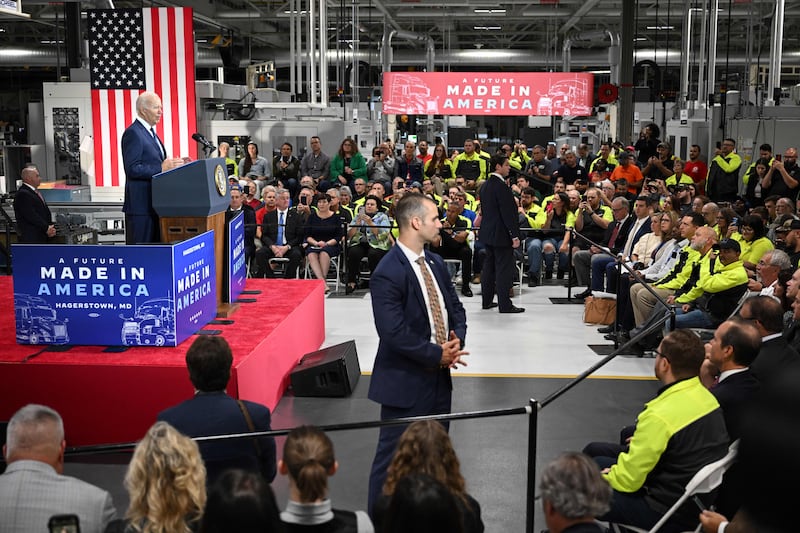On a farm in upstate New York near the Canadian border, Jim McLaughlin is making maple syrup.
His Shamrock Maple business is relatively young, about three years in operation. McLaughlin will this year increase the scale of his organic output to about 1,400 gallons (5,300 litres). However, he is concerned at rising costs and availability of key supplies.
“We have had to raise our prices at the farm stand and online by about 10 per cent to cover the increased [costs] and the availability of containers for what we are doing,” he says.
McLaughlin says he is really worried about fuel costs this year. He says his 120-hectare (300-acre) farm, which has 4,000 trees and is about 50km from the Canadian border, is “totally off the grid”.
READ MORE
“We have solar but our equipment is run by fuel oil and that price right now is double than what we paid last year,” he says.
The trees on the farm are all connected by plastic tubing, which also runs to his sugar house on the premises. The cost of this tubing is some 60 per cent more expensive than last year.

About 25 per cent of his maple business is carried out on a retail basis, he says, but retail sales are now almost prohibitive given the rise in cost.
He fears that given the increase in costs, some small producers could go to the wall.
The increase in the cost of maple syrup at McLaughlin’s farm stand is indicative of the rising prices in the United States, as the country struggles with the impact of the war in Ukraine and supply lines still recovering from the affects of Covid lockdowns.
Inflation figures released on Thursday showed that cost of living pressures in the US had accelerated again.
Consumer prices rose by an annual 8.2 per cent in September. On a month-by-month basis, prices increased by 0.4 per cent from August to September, slightly higher than the 0.1 per cent rise recorded between July and August.
The August-September increase was twice as large as several economists had forecast. As a consequence, the US Federal Reserve is likely to continue with its programme of interest rate rises to try to cool inflation.
Midterm elections
The cost of living figures were not what the White House and Democratic candidates would have wanted to hear as they head into the final weeks of the campaign for the midterm elections.
Republicans who are seeking to take back control of both houses of the Congress in the elections in four weeks’ time want to fight on the issues of the economy and crime.
Democrats want to make the election about abortion rights, or even the future of democracy itself, in the wake of what they maintain were efforts by Donald Trump and his supporters to overturn Joe Biden’s victory in 2020.
Republicans immediately seized on the new figures about rising prices, contending that inflation would cost families $8,739 (€8,979) over the next year even if prices stopped increasing. “The American people cannot afford that”, the party said.
The White House is fully aware of the potency of their opponents’ message about the cost of living.
On Thursday morning Mr Biden acknowledged his administration had more work to do in curbing price rises. He tried to put the best face on the figures. He pointed to inflation being a global problem and promised his signature Inflation Reduction Act would help Americans’ pockets in the future.
“The Inflation Reduction Act locks in lower healthcare premiums for 13 million people, lowers seniors’ prescription drug prices and caps their out-of-pocket expenses for prescription drugs at the pharmacy at $2,000 per year. The Inflation Reduction Act will also lower families’ energy costs in the months ahead,” the president said.
He said Republicans would reverse these initiatives if they took control of Congress after the elections and that every day costs would go up, not down.
Inflation
As the country prepares to vote on November 8th, the US economy is in curious shape. As the official figures on Thursday showed, the monthly inflation figure is ticking upwards again.
In response to the inflation figures, over recent months, the Federal Reserve has raised interest rates by three percentage points since March with a further hike possible in a few weeks’ time. The new statistics only harden this likelihood.
The danger of a wave of interest rate rises is that it could go too far and tip the entire economy into recession.
Earlier this week Jamie Dimon, chief executive of JPMorgan Chase, forecast in an interview with CNBC that the US was likely to be “in some kind of recession six to nine months from now”.
Mr Biden, however, rejected such projections. He later gave a caveat that if there was a recession, it would be only a “slight” one.
The International Monetary Fund in Washington this week spelled out in a forecast what many may perceive instinctively, that while some economies may not technically be in recession next year, it may “feel” like a recession.
At the University of Colorado in Denver, James Walsh of the political science department says there is no clear answer to whether the US is in a recession. However, he says the economy has clearly slowed down. “The Fed is doing a delicate dance right now, trying to walk up to the cliff but not fall over the cliff, trying to bring inflation down without throwing us into a bad economic recession.”
He says there is no sign at present of the series of interest rate hikes by the Fed stopping at least for the rest of the year and that the country is looking at a couple of more increases.
All of which adds to the monthly bills of Americans who have mortgages, car loans or outstanding student debt.
And then, of course, there is the price of petrol, or “gas” as it is known in the US.

Petrol is a bellwether product. The Biden administration moved swiftly and with determination in the summer when prices hit $5 per gallon. The White House released millions of gallons from the country’s strategic reserve and strongly highlighted when prices fell for close to 100 days in a row.
However, petrol costs are ticking up again also. The decision by the oil exporting countries who are members of Opec last week to cut production levels despite strong lobbying from Washington stung the administration as it could exacerbate prices at the forecourt.
Democrats said Saudi Arabia, as the leading player in Opec, was effectively becoming involved in the congressional elections by making a move which will likely push up petrol prices just as polling day comes into view, providing Republicans with a significant advantage.
The backlash against the Saudis among leading Democrats has been so strong that it could lead to a swift change in the decades-long close relationship between Washington and Riyadh.
Employment
However, inflation is only one part of the economy. Another measure is jobs, which remain plentiful, although the market is cooling down.
With little to sing about on the inflation front, the White House has focused on its employment-creation record.
“It is time to bury the label ‘rust belt’,” Mr Biden said this week as he lauded the move by manufacturers Honda and LG to invest $5 billion in making electric vehicle batteries and factory re-equipping in the state of Ohio. This came hot on the heels of a large $20 billion investment announced by computer chip maker Intel in the same area.
“Over the past four months, we’ve created an average of 350,000 jobs a month. That’s down from the 450,000 jobs a month prior, in the prior four months, and down from the 600,000 jobs a month the four months before that,” he said. “The pace of job growth is cooling while still powering our recovery forward.”
Mr Biden has focused in recent weeks in particular on the number of manufacturing jobs that have been created.
Although American manufacturing capacity retrenched significantly over recent years as companies moved to establish plants in cheaper locations overseas, the White House has been anxious to promote the notion that this trend is being reversed.

“Where is it written that it says ‘America can’t be the leading manufacturer in the world again’? Where is that written?” Mr Biden asked, addressing workers at a Volvo manufacturing plant in Maryland. “Our economy created 263,000 jobs last month. That’s 10 million jobs since I’ve come into office. That’s the fastest job growth at any point of any president in all of American history. Historic progress.”
While the president’s approval ratings have improved over recent months, the public’s view on the economy is alarming for Democrats. A poll for broadcaster CNN this week showed nearly 80 per cent believed that economic conditions were poor or very poor.
In such circumstances, it was inevitable that Republicans would concentrate to try to capitalise on these economic concerns.
Last week the head of the Republican national committee Ronna McDaniel described the economic policy of Mr Biden and the Democratic Party as “a train wreck”, contending that inflation was at a 40-year high and petrol prices at $3.89 on average per gallon were $1.50 higher than when Mr Biden moved into the White House.






















